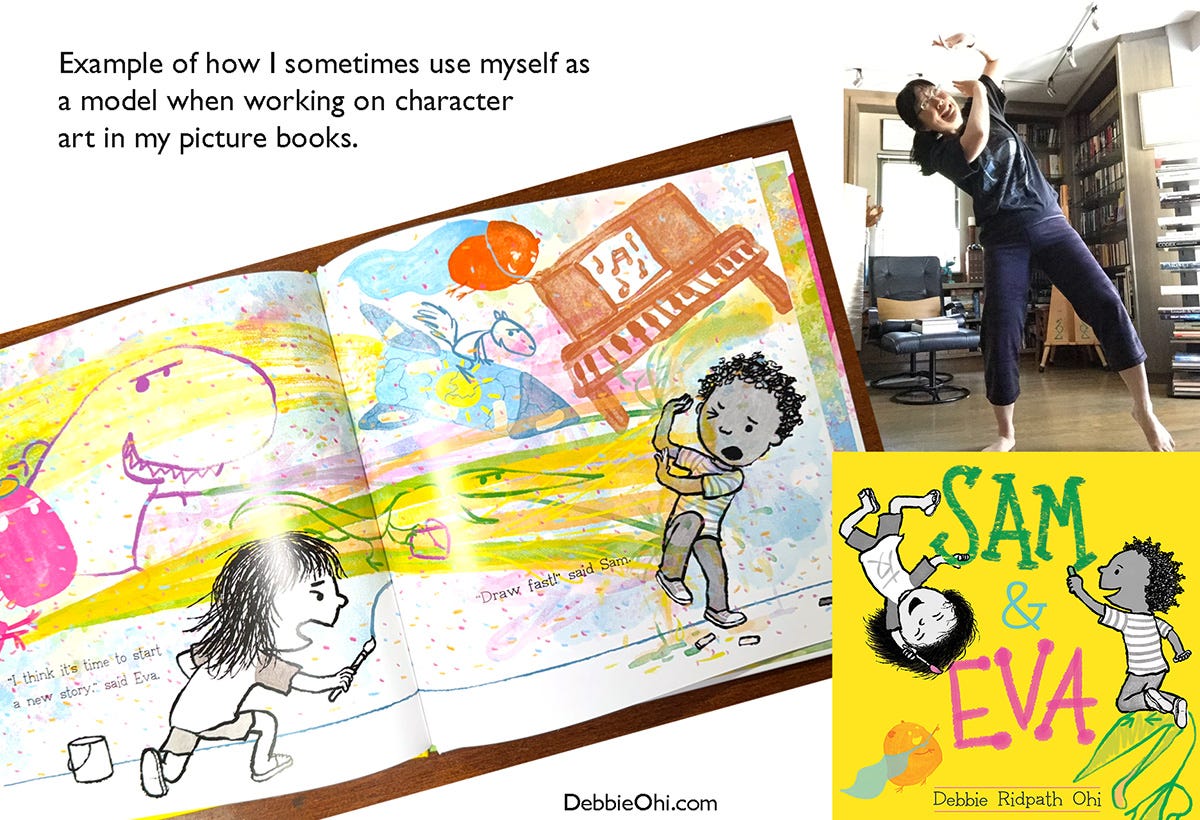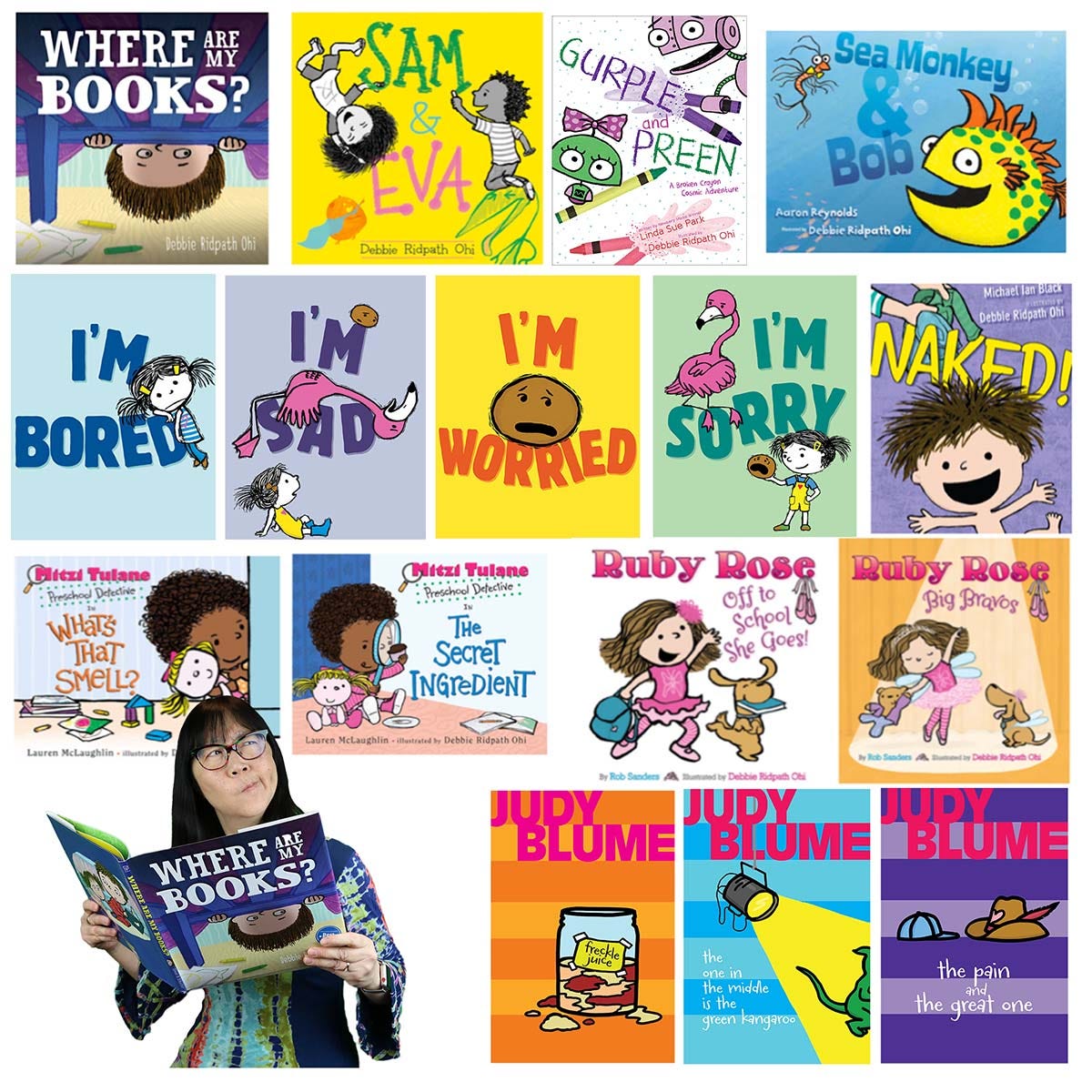Picture Books 101 (Part 7): A tip for conveying authentic character emotions in your art
Embrace your inner acting skills!
Hi, I’m Debbie Ridpath Ohi! Welcome to Part 7 of my Picture Books 101 post series, in which I share one of my methods for capturing and conveying authentic emotions in my illustrations. If you have a suggestion for a future column topic, feel free to post it in the comments!
In case you missed it:
Part 1 (for writers & illustrators): Intro, seven top tips for getting started.
Part 2 (for illustrators): Developing an illustration style and gaining confidence as an artist.
Part 3 (for writers & illustrators): Understanding picture book format and construction.
Part 4 (for writers): To rhyme or not to rhyme?
Part 5 (for writers): Why picture book authors DON’T need to find an illustrator before they submit their manuscript.
Part 6 (for illustrators): Physical vs Digital art, plus a caution about using AI art.
Years ago during an SCBWI Conference Illustrators’ Intensive session, children’s book creator Marla Frazee said she kept a mirror handy in her studio, to help her capture emotions during the illustration process.
I tried this on my next book project and found it so effective that I started doing this regularly, especially when working on character sketches. Instead of a mirror, I now use my iPhone camera but usually try to put it on a timer so I can be hands-free - that way I can involve my whole body.
Here’s an example from one of my illustrations for Sam & Eva (Simon & Schuster Books For Young Readers).
Even though I’m a grown adult (I envy those of you with young children who are willing to pose for your art ref photos!), I find the act of posing helps me better understand how to convey particular emotions in my illustrations.
Here’s one of many that I did for illustrating the characters in The Pain And The Great One, written by Judy Blume, revamped as a chapter book by Atheneum/Simon & Schuster.
Putting extra effort into conveying authentic emotions while drawing your characters will also attract more attention for your portfolio. (Also see Part 2 of my Picture Books 101 series for more portfolio tips.)
When critiquing portfolios, I can usually tell when an illustrator is just going for their default method in drawing character emotions. Even if you have very simple line-art style (like mine), I encourage you to look for ways to add depth to how you draw your characters’ emotions.
And as I mentioned above, don’t forget that emotions aren’t just shown in a face but also in body language.
An exercise I highly recommend: Practice your acting skills! For others who are self-conscious about this sort of thing (insert my own hand waving feebly here), make sure no one else is around when you do this so can feel free to act as goofy and over-the-top as you’d like.
Make a list of emotions: some obvious (happy, sad, etc.) but some more subtle (wistful, worried but excited, suspicious, etc).
For each emotion, try to BECOME that particular emotion. Act it out, don’t just aim for one still pose.
When I first tried this, even though I was alone in the house, I still felt SUPER self-conscious! But the more I practiced, the easier it became. I also started paying extra close attention to how animators conveyed emotions in facial and body language, going back to animated films featuring emotional characters….like Turning Red.
Do YOU have your own tips and tricks for conveying emotions in your illustrated characters? Please share them in the Comments section so others can see!
I’ve launched a new Substack publication called The Red Balloon, which focuses on my personal essays and non-kidlit art. Here’s why I decided to start another Substack newsletter.
If you’ve been enjoying my free Picture Books 101 series for children’s book writers and illustrators, I’d very much appreciate you spreading the word about my Substack and me and my work.
Thank you for your encouragement and support this past year! Wishing you all a peaceful holiday season.












this is so fun and helpful! thank you for sharing💛
Just came across your post. Super helpful 🥰